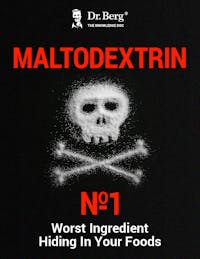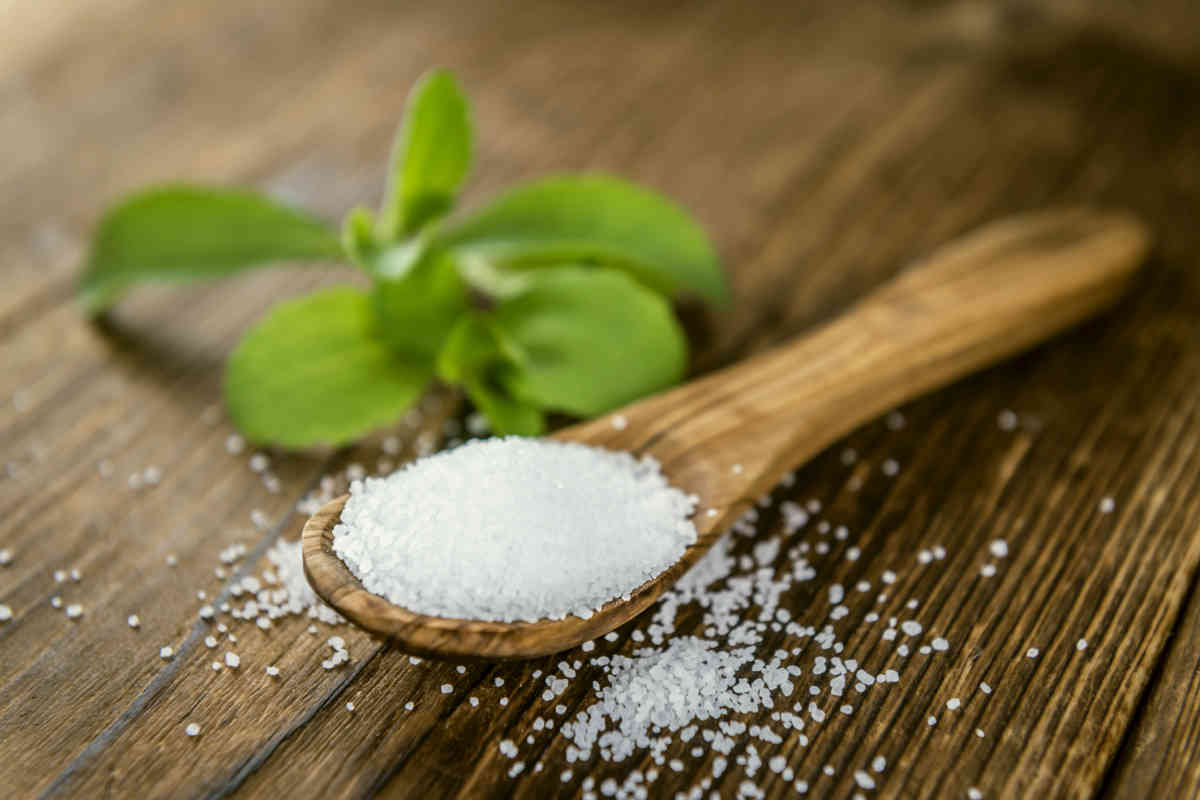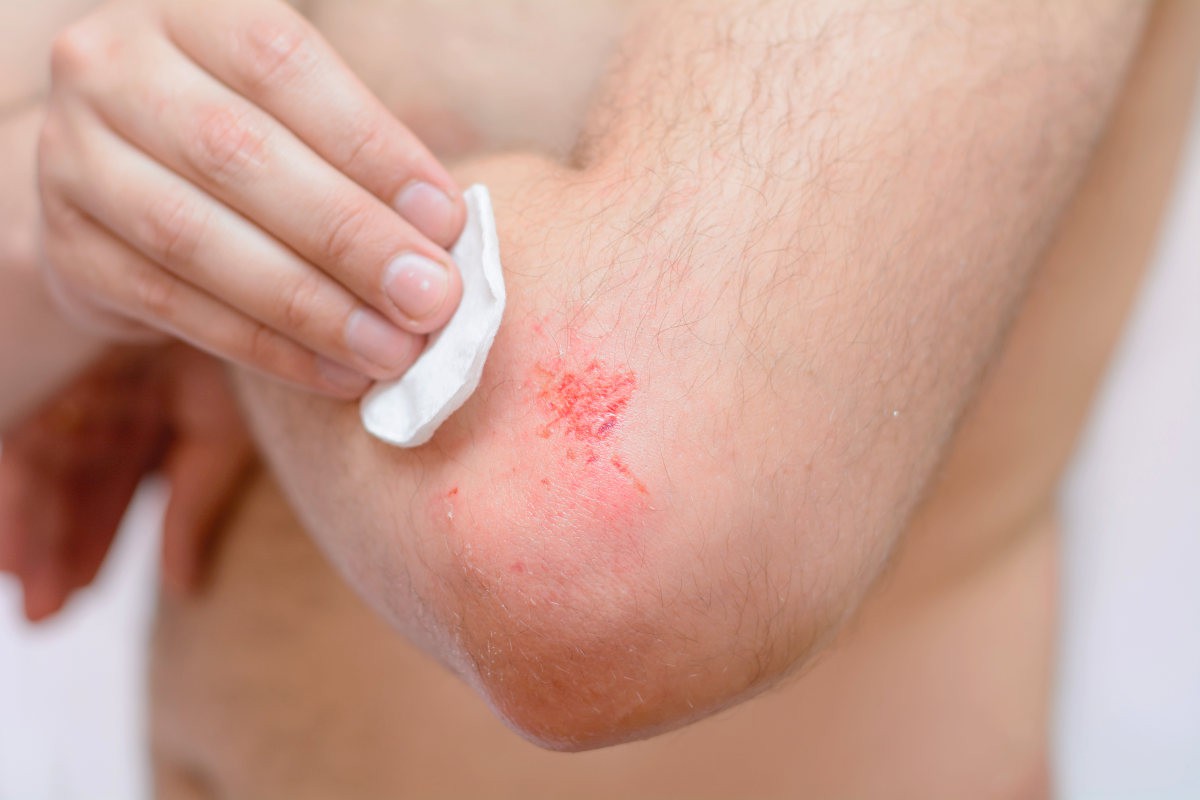Can Stevia Trigger Fat Storing Hormone

4 Dangerous Ingredients to Avoid – Wallet Cutout Card
Identify harmful ingredients hidden in processed foods
Learn to recognize and identify these ingredients on food labels
Get a practical wallet cutout for quick reference while shopping or dining out

4 Dangerous Ingredients to Avoid – Wallet Cutout Card
Identify harmful ingredients hidden in processed foods
Learn to recognize and identify these ingredients on food labels
Get a practical wallet cutout for quick reference while shopping or dining out

4 Dangerous Ingredients to Avoid – Wallet Cutout Card
Identify harmful ingredients hidden in processed foods
Learn to recognize and identify these ingredients on food labels
Get a practical wallet cutout for quick reference while shopping or dining out

4 Dangerous Ingredients to Avoid – Wallet Cutout Card
Identify harmful ingredients hidden in processed foods
Learn to recognize and identify these ingredients on food labels
Get a practical wallet cutout for quick reference while shopping or dining out

4 Dangerous Ingredients to Avoid – Wallet Cutout Card
Identify harmful ingredients hidden in processed foods
Learn to recognize and identify these ingredients on food labels
Get a practical wallet cutout for quick reference while shopping or dining out

4 Dangerous Ingredients to Avoid – Wallet Cutout Card
Identify harmful ingredients hidden in processed foods
Learn to recognize and identify these ingredients on food labels
Get a practical wallet cutout for quick reference while shopping or dining out

4 Dangerous Ingredients to Avoid – Wallet Cutout Card
Identify harmful ingredients hidden in processed foods
Learn to recognize and identify these ingredients on food labels
Get a practical wallet cutout for quick reference while shopping or dining out

4 Dangerous Ingredients to Avoid – Wallet Cutout Card
Identify harmful ingredients hidden in processed foods
Learn to recognize and identify these ingredients on food labels
Get a practical wallet cutout for quick reference while shopping or dining out

4 Dangerous Ingredients to Avoid – Wallet Cutout Card
Identify harmful ingredients hidden in processed foods
Learn to recognize and identify these ingredients on food labels
Get a practical wallet cutout for quick reference while shopping or dining out

4 Dangerous Ingredients to Avoid – Wallet Cutout Card
Identify harmful ingredients hidden in processed foods
Learn to recognize and identify these ingredients on food labels
Get a practical wallet cutout for quick reference while shopping or dining out

4 Dangerous Ingredients to Avoid – Wallet Cutout Card
Identify harmful ingredients hidden in processed foods
Learn to recognize and identify these ingredients on food labels
Get a practical wallet cutout for quick reference while shopping or dining out

4 Dangerous Ingredients to Avoid – Wallet Cutout Card
Identify harmful ingredients hidden in processed foods
Learn to recognize and identify these ingredients on food labels
Get a practical wallet cutout for quick reference while shopping or dining out

4 Dangerous Ingredients to Avoid – Wallet Cutout Card
Identify harmful ingredients hidden in processed foods
Learn to recognize and identify these ingredients on food labels
Get a practical wallet cutout for quick reference while shopping or dining out

4 Dangerous Ingredients to Avoid – Wallet Cutout Card
Identify harmful ingredients hidden in processed foods
Learn to recognize and identify these ingredients on food labels
Get a practical wallet cutout for quick reference while shopping or dining out

4 Dangerous Ingredients to Avoid – Wallet Cutout Card
Identify harmful ingredients hidden in processed foods
Learn to recognize and identify these ingredients on food labels
Get a practical wallet cutout for quick reference while shopping or dining out

Maltodextrin – #1 Worst Ingredient Hiding in Your Foods
Discover why maltodextrin is a highly problematic ingredient found in processed foods
Understand the detrimental impact of maltodextrin on metabolic health and weight gain
Learn about hidden sources of maltodextrin and how to spot this harmful ingredient on labels
Explore why the food industry uses maltodextrin extensively and how labeling practices allow it to go unnoticed

Maltodextrin – #1 Worst Ingredient Hiding in Your Foods
Discover why maltodextrin is a highly problematic ingredient found in processed foods
Understand the detrimental impact of maltodextrin on metabolic health and weight gain
Learn about hidden sources of maltodextrin and how to spot this harmful ingredient on labels
Explore why the food industry uses maltodextrin extensively and how labeling practices allow it to go unnoticed

Maltodextrin – #1 Worst Ingredient Hiding in Your Foods
Discover why maltodextrin is a highly problematic ingredient found in processed foods
Understand the detrimental impact of maltodextrin on metabolic health and weight gain
Learn about hidden sources of maltodextrin and how to spot this harmful ingredient on labels
Explore why the food industry uses maltodextrin extensively and how labeling practices allow it to go unnoticed

Maltodextrin – #1 Worst Ingredient Hiding in Your Foods
Discover why maltodextrin is a highly problematic ingredient found in processed foods
Understand the detrimental impact of maltodextrin on metabolic health and weight gain
Learn about hidden sources of maltodextrin and how to spot this harmful ingredient on labels
Explore why the food industry uses maltodextrin extensively and how labeling practices allow it to go unnoticed

Maltodextrin – #1 Worst Ingredient Hiding in Your Foods
Discover why maltodextrin is a highly problematic ingredient found in processed foods
Understand the detrimental impact of maltodextrin on metabolic health and weight gain
Learn about hidden sources of maltodextrin and how to spot this harmful ingredient on labels
Explore why the food industry uses maltodextrin extensively and how labeling practices allow it to go unnoticed

Maltodextrin – #1 Worst Ingredient Hiding in Your Foods
Discover why maltodextrin is a highly problematic ingredient found in processed foods
Understand the detrimental impact of maltodextrin on metabolic health and weight gain
Learn about hidden sources of maltodextrin and how to spot this harmful ingredient on labels
Explore why the food industry uses maltodextrin extensively and how labeling practices allow it to go unnoticed

Maltodextrin – #1 Worst Ingredient Hiding in Your Foods
Discover why maltodextrin is a highly problematic ingredient found in processed foods
Understand the detrimental impact of maltodextrin on metabolic health and weight gain
Learn about hidden sources of maltodextrin and how to spot this harmful ingredient on labels
Explore why the food industry uses maltodextrin extensively and how labeling practices allow it to go unnoticed

Maltodextrin – #1 Worst Ingredient Hiding in Your Foods
Discover why maltodextrin is a highly problematic ingredient found in processed foods
Understand the detrimental impact of maltodextrin on metabolic health and weight gain
Learn about hidden sources of maltodextrin and how to spot this harmful ingredient on labels
Explore why the food industry uses maltodextrin extensively and how labeling practices allow it to go unnoticed

Maltodextrin – #1 Worst Ingredient Hiding in Your Foods
Discover why maltodextrin is a highly problematic ingredient found in processed foods
Understand the detrimental impact of maltodextrin on metabolic health and weight gain
Learn about hidden sources of maltodextrin and how to spot this harmful ingredient on labels
Explore why the food industry uses maltodextrin extensively and how labeling practices allow it to go unnoticed

Maltodextrin – #1 Worst Ingredient Hiding in Your Foods
Discover why maltodextrin is a highly problematic ingredient found in processed foods
Understand the detrimental impact of maltodextrin on metabolic health and weight gain
Learn about hidden sources of maltodextrin and how to spot this harmful ingredient on labels
Explore why the food industry uses maltodextrin extensively and how labeling practices allow it to go unnoticed

Maltodextrin – #1 Worst Ingredient Hiding in Your Foods
Discover why maltodextrin is a highly problematic ingredient found in processed foods
Understand the detrimental impact of maltodextrin on metabolic health and weight gain
Learn about hidden sources of maltodextrin and how to spot this harmful ingredient on labels
Explore why the food industry uses maltodextrin extensively and how labeling practices allow it to go unnoticed

Maltodextrin – #1 Worst Ingredient Hiding in Your Foods
Discover why maltodextrin is a highly problematic ingredient found in processed foods
Understand the detrimental impact of maltodextrin on metabolic health and weight gain
Learn about hidden sources of maltodextrin and how to spot this harmful ingredient on labels
Explore why the food industry uses maltodextrin extensively and how labeling practices allow it to go unnoticed

Maltodextrin – #1 Worst Ingredient Hiding in Your Foods
Discover why maltodextrin is a highly problematic ingredient found in processed foods
Understand the detrimental impact of maltodextrin on metabolic health and weight gain
Learn about hidden sources of maltodextrin and how to spot this harmful ingredient on labels
Explore why the food industry uses maltodextrin extensively and how labeling practices allow it to go unnoticed

Maltodextrin – #1 Worst Ingredient Hiding in Your Foods
Discover why maltodextrin is a highly problematic ingredient found in processed foods
Understand the detrimental impact of maltodextrin on metabolic health and weight gain
Learn about hidden sources of maltodextrin and how to spot this harmful ingredient on labels
Explore why the food industry uses maltodextrin extensively and how labeling practices allow it to go unnoticed

Maltodextrin – #1 Worst Ingredient Hiding in Your Foods
Discover why maltodextrin is a highly problematic ingredient found in processed foods
Understand the detrimental impact of maltodextrin on metabolic health and weight gain
Learn about hidden sources of maltodextrin and how to spot this harmful ingredient on labels
Explore why the food industry uses maltodextrin extensively and how labeling practices allow it to go unnoticed
Is stevia safe as a sweetener? To find out if it's a yes or no, I will answer this question for you and explain in more detail how it affects your health.
RELATED: The Danger of Glucose in Your Urine
In this article:
Is Stevia Safe? The Real Truth Behind Stevia
Stevia Is Safe Without Maltodextrin or Dextrin

The stevia sweetener is safe to use and cannot trigger Fat Storing Hormone if the additives or sugars maltodextrin and dextrin are not in it. Maltodextrin is a type of sugar made from wheat, potato starch, rice, and corn and is highly processed. Maltodextrin, for example, is double the glycemic index of regular sugar. This food additive is the worst type of sugar you can possibly consume. I wouldn't take any products with maltodextrin, so read the labels and do not consume stevia containing these two sugars.
Dextrin includes various carb strains produced during the process of starch hydrolysis.
Glycemic Index (GI) Definition: A relative ranking of carbs in foods based on how carbohydrates affect the levels of blood glucose. Based on an individual food portion, a low GI has 55 or less, moderate has 56 to 69, and high has 70 and above.
Because maltodextrin has a high GI index, it can cause a spike in your blood sugar which makes it dangerous for diabetic people. This sugar can quickly get into the bloodstream, and when not used to fuel energy (since it is also carbs), it can be stored as fat. It also has no essential nutrients other than carbs. One teaspoon of this sugar has only 3.8 g of carbs and 15 calories. It is highly-processed. That's why it's already been devoid of the nutrients.
Consuming Stevia Is Not a Problem

Is stevia safe for regular use? The stevia plant is 300 times sweeter than sugar, but the problem is there are limited human studies on stevia. The animal studies, however, show improvements in blood sugar levels.
In my own experience of consuming stevia sugar, I drink a lot of liquid stevia in carbonated water. It is one of the best sweeteners, and you can also add it as an ingredient to your baked goods and beverages. It's made from an herb and totally natural so you can enjoy its health benefits, too. So, I wouldn't worry about any negative effects of sugar stevia.
In the last three decades of working with tens of thousands of clients, I have never seen any problem with organic stevia with pre-diabetic, diabetic, or people following a weight loss program. I highly recommend using stevia leaf extract, but I remind you that you may experience a bitter aftertaste with this sweetener.
RELATED: Sugar Alcohols Making You Fat
Is Stevia Safe for People with Diabetes?
In 2015, 9.4% (30.3 million) of the American population had diabetes, 7.2 million were not diagnosed and 23.1 million were. The data alone shows that many Americans are suffering from this condition, and this is because many foods and beverages are highly-processed, which means there are high levels of added sugars. Although people with diabetes have restrictions when it comes to the food they eat, they don’t need to be deprived of sweets. This is where stevia comes in as a sweetener with few properties or abilities that can benefit people with diabetes.
1. May Lower Blood Pressure

Many diabetic patients have high blood pressure primarily because diabetes increases the risk of stroke and heart disease. If you are diabetic and have high blood pressure, you may develop other health problems. This is why it’s important to also monitor your blood pressure just to make sure you will not suffer from both conditions at the same time.
The stevia sweetener actually supports the lowering of your blood pressure. It has cardiotonic properties that aid in normalizing your blood pressure while regulating your heartbeat. The plant contains glycosides. These are naturally occurring substances where a carb portion combines with a hydroxy compound, which aids in expanding your blood vessels for better blood flow.
Cardiotonic Definition: A substance with a favorable effect on the function of the heart. It is mostly present in drugs to help normalize the heart's function.
2. May Lower Blood Glucose
Unlike artificial sweeteners you commonly find in soft drinks, organic stevia has the ability to suppress levels of blood glucose and increase tolerance of glucose. It also has no calories. This only shows stevia is a good substitute for artificial sugars available on the market today.
3. Can Help Heal Wounds Faster

It is also known that people with diabetes have difficulties healing their wounds. This is because their high blood glucose levels can affect their nerves over time, which can lead to poor blood circulation. As a result, this makes it difficult for the blood to reach the areas affected.
Another possible reason why healing is slow is if there are tiny organisms that formed in the wound, preventing the healing process. When you take foods and beverages with stevia, it may help in restraining the formation of these microorganisms, thus hastening the healing process. This ability of the sweetener makes it a suitable type of sugar for diabetics. Just make sure if you’re purchasing packed stevia sweetener on the market, check the label and ensure maltodextrin and dextrin are not there.
How to Add Stevia in Your Foods and Beverages
There are a few ways you can add stevia in your foods and beverages. If you have its fresh leaves, you can make an herbal tea along with some mint leaves. You can boil its leaves and add stevia extract into your beverage. Just taste-test your drink first to make sure it's not too sweet.
You can also convert its dried leaves into powder sweetener. Just bundle the leaves and hang them outside to dry. Strip the leaves from the stems and powderize them using a blender or coffee grinder. Store the powder in an airtight container and use it to sweeten your recipes and drinks.
You can also turn the sweetener into syrup. Use the dried leaves and soak them in a cup of warm water. Place the mixture into an airtight container and leave it for 24 hours before straining the leaves. You can even cook the strained solution on low heat so it becomes more concentrated. Store the syrup in your fridge as it can last for several years.
The answer to the question “Is stevia safe?” boils down to the fact that it is generally recognized as safe unless maltodextrin or dextrin is present in the mixture. For this reason, when buying the plant stevia in grocery stores, be mindful about getting the right product and watch out for these two sugars if you want to use it healthily in your foods and drinks.
What is your acceptable daily intake of stevia as a sweetener in your foods and beverages? What are the effects? Tell us in the comments section.
Up Next:
Disclaimer: Our educational content is not meant or intended for medical advice or treatment.
Editor’s Note: This post has been updated for quality and relevancy.
Previous blog
What Type of Protein Works Best for Weight LossNext blog
Will the Sugar free Help Me Lose WeightTags

Popular
08/21/2024
55.7K views
02/23/2025
46.8K views
11/18/2024
281.2K views
03/18/2024
11/21/2022




